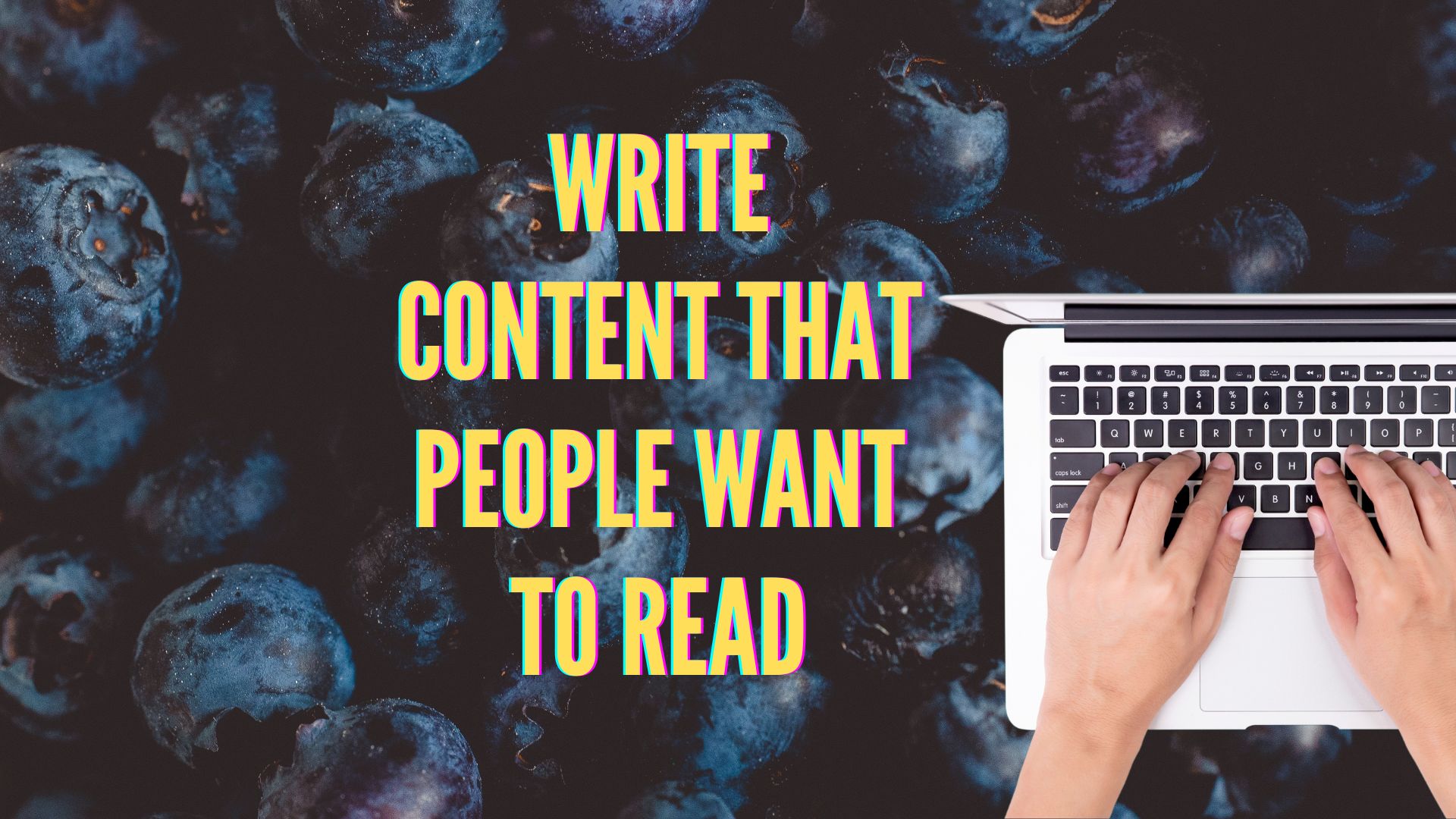What if I told you there’s a secret ingredient that can transform your blog posts from ‘meh’ to ‘mesmerizing’? It’s not magic, it’s the art of captivating content.
In this comprehensive guide, we’ll delve into the secrets of crafting blog posts that not only inform but also enthrall your readers. We’ll explore the essential elements that make content truly captivating, from attention-grabbing introductions to compelling conclusions. By the end of this post, you’ll have the tools and strategies to transform your writing, attract more readers, and build a loyal following.
If you’re new to the blogging world or simply seeking a structured approach to enhance your skills, our can provide valuable guidance and support.
Now, let’s embark on this journey to create blog content that truly shines!
1. The Power of the Opening: Hooking Your Readers from the Start
The first few sentences of your blog post are crucial. They’re your chance to make a strong first impression and entice readers to continue reading. Think of your blog post’s introduction like a movie trailer – it needs to be exciting, intriguing, and leave the audience wanting more. If it’s dull, confusing, or irrelevant, people will simply click away.
Types of Strong Intros
Here are a few proven techniques to craft captivating introductions that will hook your readers from the very beginning:
Ask a Thought-Provoking Question: Pose a question that directly relates to your readers’ pain points or interests. This piques their curiosity and encourages them to seek answers within your blog post. For example, if you’re writing about productivity tips, you could start with, “Are you tired of feeling overwhelmed by your to-do list?”
Share a Surprising Fact or Statistic: Startle your readers with a fascinating fact or statistic that highlights the importance of your topic. This grabs their attention and demonstrates the value of your content. For instance, if you’re writing about the benefits of exercise, you could open with, “Did you know that regular exercise can reduce your risk of chronic diseases by up to 50%?”
Tell a Relatable Story or Anecdote: Share a personal story or anecdote that connects with your readers on an emotional level. This helps them relate to your experiences and makes your content more engaging. For example, if you’re writing about overcoming a challenge, you could begin with, “I used to struggle with procrastination, but then I discovered a simple technique that transformed my productivity…”
Example Time: Show, Don’t Just Tell
Let’s see these techniques in action with some examples tailored to different niches:
Question Example (Recipe Blog): “Ever wish you could whip up a delicious, healthy dinner in under 30 minutes?”
Statistic Example (Productivity Blog): “The average person wastes 3 hours a day on distractions. What if you could reclaim that time?”
Anecdote Example (DIY Blog): “Let’s just say my first attempt at painting my kitchen cabinets was a Pinterest fail.”
Key Point: Your intro should be concise, engaging, and relevant to the overall content and tone of your post. It should also create a sense of curiosity and encourage readers to continue reading to find the answers or solutions they seek. Remember, first impressions matter, so make sure your introduction leaves a lasting impact!
2. Structure for Success: Guiding Your Readers on a Clear Path
It’s Not Just a Ramble
Even if you’re bursting with brilliant ideas, a disorganized blog post is like a tangled web – hard to navigate and even harder to enjoy. Think of structure as building a clear path for your reader, guiding them seamlessly through your content:
Beginning: The Grand Entrance This is where your captivating introduction shines, setting the stage and enticing readers to continue their journey.
Middle: The Heart of the Matter Here’s where you deliver the goods – clear explanations, logical steps, or the unfolding of your story. Keep it organized and focused to maintain momentum.
End: The Memorable Farewell Wrap things up with a satisfying conclusion, leaving your readers with key takeaways or a compelling call to action.
Give Them Guideposts
No one enjoys facing a daunting wall of text. Make your content easily digestible by using:
Headings & Subheadings: Break up your ideas into clear sections, making it easy for readers to scan and find the information they’re looking for.
Short Paragraphs: Keep your paragraphs concise, ideally 2-3 sentences max. This improves readability and prevents your content from feeling overwhelming.
Visuals (Optional): Images, infographics, and videos can break up the text and add visual appeal, making your content more engaging and shareable. If you’re looking for a user-friendly tool to create eye-catching visuals, even without design experience, check out Canva.com.
Calls to Action: Keep Them Involved
Don’t be afraid to invite your readers to participate! Strategic calls to action (CTAs) sprinkled throughout your post can boost engagement and encourage interaction. Here are a few ideas:
- Questions to Ponder: Invite readers to share their thoughts and experiences in the comments section.
- Mini-Challenges: Encourage readers to try a quick tip or exercise related to your content.
- Social Sharing: Make it easy for readers to share your post with their networks by including social sharing buttons. If you’re looking for ways to boost your social shares and encourage comments, check out our guide on How to Get Your First Blog Comment & Social Shares.
Important Note: CTAs should feel natural and relevant to your content, not forced or sales-y.
By implementing these structural elements, you’ll create a smooth and enjoyable reading experience, keeping your audience engaged and eager to explore more of your content.
3. Finding Your Voice: Let Your Personality Shine Through
Ditch the Textbook Tone
Unless you’re writing a research paper, your blog posts shouldn’t sound like they belong in a dusty library. Infuse your writing with personality and warmth. It’s perfectly fine to:
Use Contractions: “You’re,” “can’t,” and “it’s” sound much more natural and conversational than their formal counterparts.
Address the Reader Directly: Use “you” to create a sense of connection and make your readers feel like you’re speaking directly to them.
Let Your Enthusiasm Show: If you’re passionate about your topic, let it shine through in your writing! Use expressive language and vivid descriptions to convey your excitement.
Write as if Speaking to One Person
Imagine you’re having a coffee chat with your ideal reader. What would you say to them? How would you explain your topic in a way that’s easy to understand and resonates with their interests? Writing with a specific person in mind, also known as an avatar, helps you avoid a generic tone and create content that feels personal and engaging.
Read it Aloud: The Clunk Test
This simple yet powerful technique can dramatically improve the clarity and flow of your writing. Read your blog post aloud, paying attention to any sentences that feel awkward or clunky. If it’s difficult to say, it’s probably difficult to read. Rework those sentences until they flow smoothly and naturally.
Key Point: Finding your unique blogging voice takes time and practice. Don’t be afraid to experiment and let your personality shine through. The more you write, the more confident and authentic your voice will become. If you’re struggling to find your voice, check out our guide on finding your blogging voice for helpful tips and inspiration.
Remember, your voice is what sets you apart from the countless other blogs out there. Embrace it, refine it, and let it captivate your readers!
4. The Art of the Ending: Leaving a Lasting Impression
Don’t Just Fade Away
Think of your ending like the grand finale of a fireworks show – it should be memorable and leave the audience wanting more. A strong conclusion ties everything together, reinforces your key points, and inspires your readers to take action.
Elements of a Memorable Ending
- Quick Recap: Briefly summarize the main points of your blog post, reminding readers of the valuable insights they’ve gained.
- The “So What?” Factor: Explain why the information you’ve shared matters. How can readers apply it to their own lives or businesses?
- Question to Ponder: Leave readers with a thought-provoking question that encourages them to reflect on your content and continue the conversation in the comments section.
- Call to Action: Clearly tell your readers what you want them to do next. Whether it’s subscribing to your newsletter, sharing the post, or checking out another resource, a strong call to action guides them towards further engagement.
Examples of Effective Endings
Inspirational: “Remember, the journey to captivating content starts with a single step. Take what you’ve learned today and start crafting blog posts that truly resonate with your audience. You have the power to make a difference!”
Practical: “Now that you understand the key elements of captivating content, it’s time to put them into practice. Choose one of your existing blog posts and revamp it using these tips. You’ll be amazed at the difference it makes!”
Community-Focused: “We’d love to hear your thoughts! Share your biggest takeaways from this post in the comments below, or join our [Facebook group] to connect with other passionate bloggers.”
Tie it Back to the Audience
The most effective endings make readers feel empowered and capable of taking action. Show them how your content directly benefits them and provide a clear next step.
Make it Seamless
Your ending should flow naturally from the body of your post, leaving readers feeling satisfied and inspired. Avoid abrupt endings or jarring transitions.
For more in-depth guidance on crafting powerful conclusions, be sure to check out our comprehensive guide on How to Write Blog Post Endings.
5. “Word Power” Mini-Lesson: Elevate Your Writing with the Right Words
The Magic of Word Choice
Think of words as the brushstrokes of your writing canvas. The right words can transform your blog posts from simply informative to truly memorable, painting vivid pictures in your readers’ minds and evoking powerful emotions.
Tips for Choosing Captivating Words
- Vivid Verbs to the Rescue: Swap out weak, generic verbs (is, has, went) for action-packed ones that add energy and excitement to your writing. Instead of “The recipe was easy,” try “The recipe simplified dinnertime.”
- Engage the Senses: Does your writing make the reader see, hear, smell, taste, or feel something? Even a single sensory detail can transport them into your world and make your content more immersive.
- Avoid Clichés Like the Plague: Overused phrases (“at the end of the day,” “needle in a haystack”) make your writing feel stale and predictable. Strive for originality and freshness.
- Emotion Words Matter: Don’t be afraid to use words that evoke feelings (frustrated, relieved, excited). Emotions connect with readers on a deeper level and make your content more relatable. Just ensure the emotions align with your overall tone and message.
- The Thesaurus is Your Friend (But Use with Caution): A thesaurus can be a valuable tool for finding synonyms and expanding your vocabulary. However, always double-check that the new word truly fits the context of your sentence. Don’t sacrifice clarity for the sake of sounding fancy.
Mini-Challenge:
- Pick a paragraph from one of your old blog posts.
- Identify 2-3 places where you could make your word choices stronger.
- Rewrite it! Did it improve the flow and impact of the writing?
For more tips on refining your writing and crafting compelling blog posts, check out our guide on 11 Simple Tips to Writing Better Blog Posts.
Remember, the words you choose matter. They have the power to captivate, inspire, and leave a lasting impression on your readers. So, choose them wisely!
Conclusion: Your Captivating Content Journey Begins
Let’s recap the key ingredients for writing that truly connects with your audience:
- Hook ‘Em From the Start: Intros that ask questions, spark curiosity, or tap into reader emotions.
- Structure for Success: Guideposts like headings and short paragraphs make your content easy to digest.
- Let Your Voice Shine: Write like you’re talking to a friend – ditch the textbook tone!
- Endings That Matter: Summarize takeaways, inspire action, and set the stage for what they can learn next.
Practice Makes Progress
Becoming an amazing writer isn’t magic – it’s a skill you develop over time. Don’t get discouraged if your first attempts aren’t perfect! The more you write, the more natural it will feel. If you’re looking for a structured approach to improve your writing and blogging skills, our 30-day roadmap for new bloggers can be a great starting point.
Ready to see these techniques in action? Here’s your challenge:
- Choose an old blog post of yours that could use a little more pizzazz.
- Rework the intro and ending using what you’ve learned today.
- Notice the difference! Does it feel more engaging to YOU as the writer?
You’ve got this! Let me know how your revision goes.
FAQs: Mastering the Art of Captivating Blog Content
Q: How long should my blog post introductions be?
A: Aim for a concise and impactful introduction, typically around 100-200 words. The goal is to hook the reader without overwhelming them with too much information upfront.
Q: How can I make my writing more engaging?
A: Use vivid verbs, sensory details, and emotional language. Avoid clichés and vary your sentence structure. Reading your work aloud can also help you identify areas for improvement.
Q: How often should I include calls to action in my blog posts?
A: It depends on the length and purpose of your post. However, aim to include at least one call to action in the introduction, body, and conclusion.
Q: What if I’m not a naturally funny or witty writer?
A: That’s okay! Authenticity is key. Focus on writing in a clear, conversational style that reflects your personality and resonates with your audience.
Q: How can I overcome writer’s block and find inspiration for new blog posts?
A: Explore different trend sources, engage with your audience, and brainstorm ideas regularly. Don’t be afraid to step outside your comfort zone and experiment with new formats or topics.
Q: How important is it to proofread my blog posts before publishing?
A: Proofreading is essential! Typos and grammatical errors can undermine your credibility and distract readers from your message. Always take the time to carefully review your work before hitting publish.
Q: How can I measure the success of my blog posts?
A: Track metrics like page views, time on page, bounce rate, and social shares. Pay attention to comments and feedback from your audience to gauge their engagement and interest.
Remember, creating captivating blog content is an ongoing process. Keep experimenting, learning, and refining your skills, and you’ll see your blog flourish!









No Comments
Leave a comment Cancel